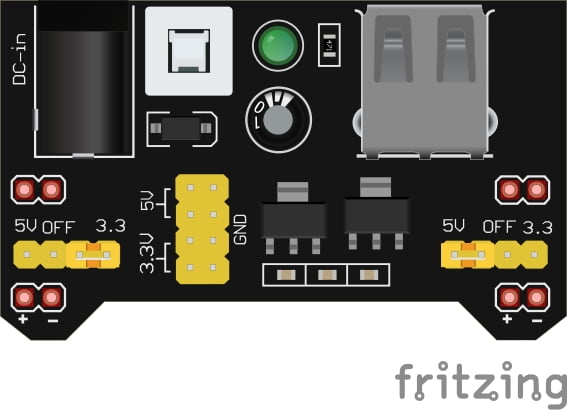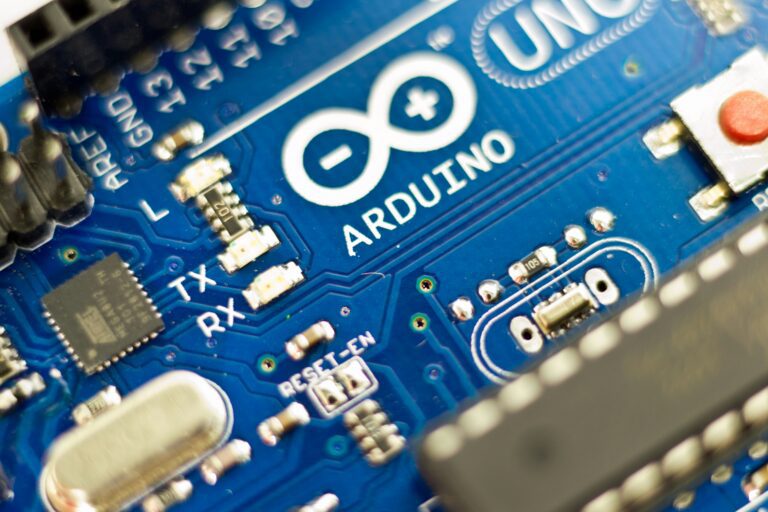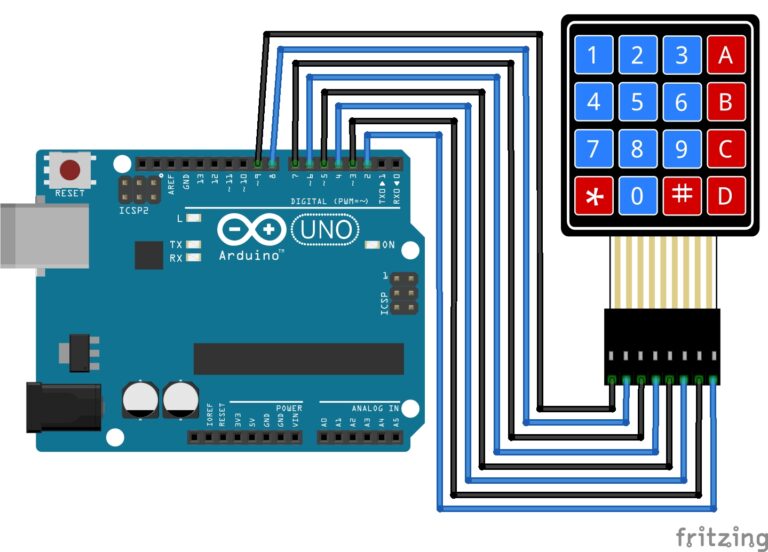
Welcome to the World of Sensors and Modules with Arduino!
Having a reliable and convenient power supply for your Arduino projects is essential for bringing your ideas to life. The Breadboard Power Module is a compact and efficient solution for powering circuits, offering stable output voltages with standard breadboards. In this sensors and modules guide, we’ll explore its working principle, key features, applications, and how it can enhance your Arduino projects.
If you’re new to Arduino, why not take a look at our Getting Started with Arduino guides. These guides are designed for beginners to learn the fundamental basics of Arduino programming.
How the Breadboard Power Supply Module Works
The Breadboard Power Module simplifies power distribution in breadboard-based projects by providing regulated 3.3V and 5V output voltages. It connects to the power rails of a breadboard, supplying power to components, such as dc motors, sensors and modules. The module regulates the input voltage to ensure a stable output voltage, protecting connected components from voltage spikes or fluctuations.
Features and Specifications:
- Input Voltage: Typically accepts a wide range of input voltages, including 9V batteries and 6V ~ 12V DC adapters.
- Output Voltage: Provides stable output voltages of 3.3V and 5V, suitable for powering microcontrollers, sensors, and other components commonly used in Arduino projects.
- Regulated Output: The power module ensures a stable and regulated output voltage, minimizing fluctuations and ensuring reliable operation of connected components.
- Breadboard Compatibility: Designed to fit standard breadboards, allowing for easy integration into prototyping projects without the need for additional wiring or soldering.
- Indicator LEDs: The LED indicates the status of the power supply, such as power-on status for each output voltage.
- Compatibility: This module is also compatible with other devices like the Raspberry Pi, ESP32, and ESP8266 etc…
Benefits of Using a Power Module
A dedicated power module, such as the Elegoo Breadboard Power Module, is designed to handle higher current loads. They provide sufficient power to components like DC motors, without straining the Arduino’s onboard voltage regulator.
The power module offers regulated output voltages, ensuring stable and consistent power delivery to the components in the circuit.
By using a power module for certain high-current components, you isolate the current from the Arduino. This reduces the risk of interference and damage to the Arduino board.
Risks of Powering DC Motors from the Arduino
DC motors typically require higher currents to operate, especially during startup or under load. Drawing such high currents directly from the Arduino can overload the regulator and cause it to overheat or fail.
DC motors generate voltage spikes, known as back electromotive force (EMF), when they are suddenly stopped or decelerated. These spikes can travel back into the Arduino’s power supply lines, potentially damaging sensitive components and disrupting the board’s operation.

How to Use the Elegoo Breadboard Power Module
- Connect Power Source: Connect the power module to a suitable power source, such as a DC adapter or battery pack.
- Attach to Breadboard: Securely attach the power module to the power rails of your breadboard, ensuring proper alignment and contact with the breadboard.
- Power Distribution: Use jumper wires to supply power to the desired rows or columns of the breadboard components.
- Verify Operation: Verify that the power module’s indicator LEDs illuminate, indicating that the module is powered on and working correctly.
By following these steps, you can effectively utilize the Breadboard Power Module to power your Arduino projects.
Basic Example
Below is a basic example of using the Breadboard Power Module. If you wish to complete this yourself, just carefully follow the diagram, and connect a 9V battery to the Power Module using a 9V Barrel Jack connector.
Necessary Equipment:
- Breadboard Power Supply Module
- Breadboard
- Jumper wires
- LED
- 220Ω Resistor
- 9V Battery
- 9v Battery Barrel Jack Connector

Applications and Usage Scenarios
Arduino Projects
Ideal for providing power to Arduino boards and peripheral components in prototyping and experimentation projects.
Sensor Prototyping
Facilitates the rapid prototyping of sensor-based projects by providing stable power to various sensors and modules.
Educational Use
Suitable for educational purposes, allowing students to learn about power distribution and regulation in electronics projects.
DIY Electronics
Useful for hobbyists and makers working on DIY electronics projects, enabling them to focus on circuit design and functionality without worrying about power supply issues.
Conclusion
In this sensors and modules guide, we explained the functionality of the Breadboard Power Supply Module, exploring its working principles, and demonstrating how to interface it with your projects. The Breadboard Power Module offers a convenient and reliable solution for powering breadboard-based Arduino projects. With its regulated output voltages, compatibility with standard breadboards, and ease of use, it enables smooth prototyping of electronics projects.
Arduino projects involving components like DC motors, the Breadboard Power Module serves as a vital component for ensuring safe and reliable power distribution. By utilizing a dedicated power module, you can protect your Arduino board from potential damage caused by high current draw, voltage spikes, and brownout conditions associated with powering DC motors directly from the board. With the Breadboard Power Module, you can power your DC motors with confidence, knowing that your Arduino projects are powered safely and efficiently.
Discover the endless possibilities for Arduino projects with more of our Sensors and Modules guides.




